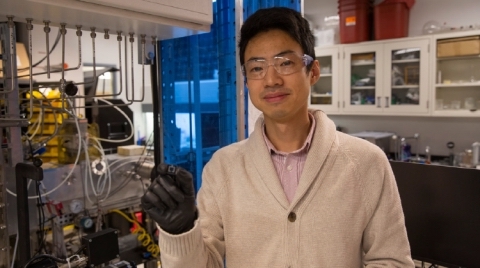Arizona State University researchers have set a new record for solar efficiency, 25.4 percent. Working with tandem photovoltaics, or stacking different materials in a solar cell, the ASU team has continued to improve solar efficiency and lower costs.
In 2017, professors Zachary Holman and Zhengshan “Jason” Yu and their team layered semi-transparent perovskite over silicon and set a world record for solar cell efficiency of 23.6 percent. Recently, the team added two chemicals to the perovskite layer and broke its own record with an efficiency rate of 25.4 percent.
“The cost of solar electricity is largely driven by the efficiency of the panels installed,” Zachary Holman said. “The increase in cell efficiency that we’ve demonstrated has the potential to lower the cost of solar energy, which will in turn mean that more solar panels will be installed.
The results of a paper recently published in Joule, a Cell Press journal, outline how the researchers achieved the new record by adding chemicals to the perovskite precursor solution.
While spinning the precursor solution on top of a silicon cell, the additives increase the grain size of the perovskite, enhancing its photovoltaic characteristics and resulting in a higher open-circuit voltage of the perovskite/silicon tandem solar cell. In other words, it increases the maximum voltage that the solar cell outputs.
“This is a big advancement of ASU’s cutting-edge research on silicon-based tandem solar cells,” Yu said. “Once the efficiency gain is big enough to justify the add-on cost of the additional perovskite layer, we envision it would be first adopted by the residential and commercial markets, which have higher balance-of-system costs.”
The team envisions its tandem solar cells will be on roofs in approximately 10 years.
In support of this and related research, Holman and Yu were recently awarded $2.5 million from the Department of Energy’s Solar Energy Technologies Office to develop characterization tools that will allow the team to pinpoint losses in perovskite solar cells and use a new deposition technique to minimize short-circuit current and fill factor losses to improve solar cell efficiency.




